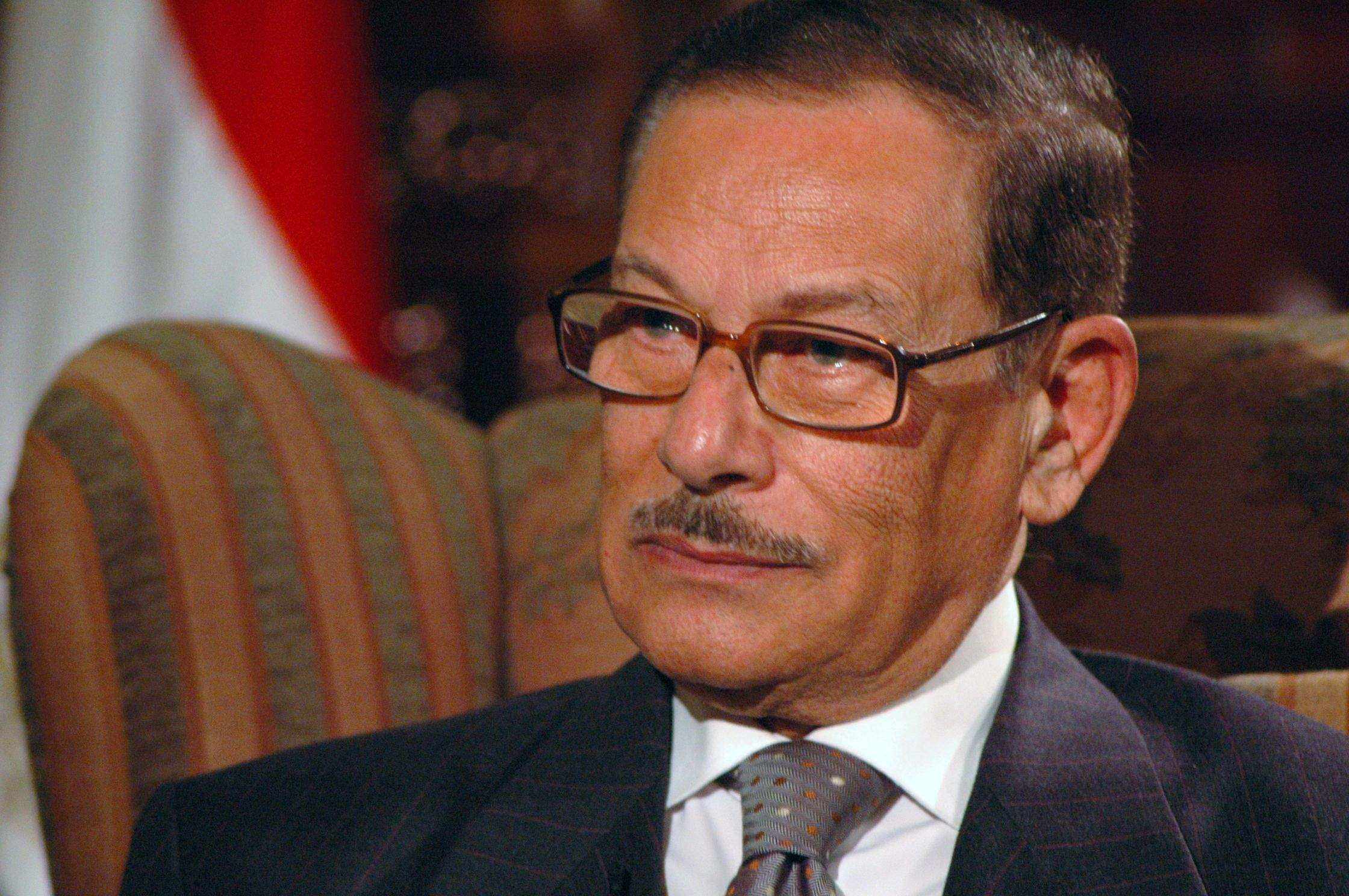“There is nothing left for the late but his good biography.” Thus, the famous proverb says, which was entirely contradicted by Safwat al-Sharif, the man of Hosni Mubarak’s regime, whose death revealed the details of a long biography marked by corruption. Last Thursday, al-Sharif died at the age of 87 due to complications from coronavirus and leukemia at the Nile Valley Hospital of the General Intelligence. He was born on 19 January 1933 and has a Bachelor of Military Science. He was a General Intelligence officer in the sixties. He was tried in the case of the apparatus’ deviation during the reign of its controversial commander Salah Nasr.
Al-Sharif disappeared from sight for a few years, before reappearing in political life during former President Anwar Sadat’s regime. In 1974, al-Sharif joined the State Information Service before successfully removing its president, Morsi Saad al-Din, and assuming the position in 1979. When Sadat formed the National Party in 1977, Sharif joined the list of founders. In 1980, Sharif was appointed president of the Radio and Television Union. With former President Hosni Mubarak assuming power, in 1982, al-Sharif assumed the Minister of Information’s position and kept it for about 22 years until 2004.
In 2002, Sharif was for nearly ten years the secretariat of the dissolved National Party, of which he was one of its founding members. Al-Sharif was one of the inner circle close to Mubarak, to whom many positions were assigned. In his last official appearance at a press conference during the January 2011 revolution, al-Sharif said his famous phrase, “We will remain tall, embracing the people.” Al-Sharif was put on trial like most of Mubarak’s men after the latter stepped down, and he was imprisoned in a corruption case. However, he was later released, and then he disappeared from view.
The news of al-Sharif’s death revealed many secrets and tales about the mysterious intelligence man, about whom close people say that he was a “state alone,” and his self was inviolable so that no one was exposed to him after the revolution and his sanctity continued. Perhaps the most prominent thing that was attached to him was the presidency of what was known as the “dirty business” department, which specialised in implicating Egyptian artists and students and Arab politicians in immoral activities and blackmailing them with them to accept work as agents. The documents of the so-called deviation of the intelligence apparatus that was submitted to the Egyptian judiciary after the June 1967 setback extensively talked about his suspicious activity. Al-Sharif at that time had a pseudonym “Muwafi.” In 1968, the court that heard the intelligence deviation case issued its verdicts on the defendants in the case, including al-Sharif, who was dismissed from working in the intelligence service.
The artist, Etimad Khorshid, in 1988, through her book “Witnessing the Perversions of Salah Nasr,” documented these deviations and mentioned the names of some artists who were subjected to sexual exploitation and extortion after being filmed. Statements and facts were issued years later that made Khorshid’s account more believable. For example, the late artist Omar Sharif revealed that Safwat asked him to establish a relationship with a Lebanese actress to reach her father and liquidate him. In the last years of Mubarak’s rule, what was said to be leaked documents for the investigations with al-Sharif admitted to his role in these recruitment and extortion operations. At the time, these leaks were placed within the framework of the battle that Gamal Mubarak fought to liquidate the old guard from his father’s men in preparation for his assumption of power.
Among these artists is Souad Hosni, whose family accuses al-Sharif of murdering her especially with what was revealed in the notes of “Cinderella,” that she was subjected to harassment from him while he was working in the Egyptian intelligence service. It is said that she sought refuge with the former president Mubarak to keep him away from her, but all attempts were unsuccessful. The departure of “Cinderella” came after she announced that she intended to publish her memoirs. She even titled one of her chapters: “The Day of My Murder.” However, the notes and cassette tapes on which she wrote disappeared completely after her death. On June 21, 2001, “Cinderella” died after falling from an apartment balcony on the sixth floor of Stuart Tower in the British capital, London. Her death sparked a controversy that has not yet subsided, as there are doubts about her murder and not her suicide, as British police announced at the time.
Parallel to the announcement of Sharif’s death, Egyptian producer Ihab Khorshid announced that the family would receive condolences for the death of his younger brother, the late guitarist Omar, 40 years after his death. After al-Sharif’s death, Ihab posted on Facebook a comment expressing his joy at the end of “tyrants and the wrongdoers” without mentioning a specific name.
Etemad, the wife of Omar Khorshid’s father, had previously confirmed in several of her media interviews the involvement of Sharif in Omar’s death, confirming that the late minister was envious of her husband’s son because of his strong friendship with actress Souad Hosni, after her separation from singer Abdel Halim Hafez, and he wanted revenge. In her memoirs, which were published posthumously in Rose al-Youssef newspaper, Souad Hosni had previously confirmed that al-Sharif had prepared numerous plots to avenge Omar, even launching a rumour that the late guitarist had been associated with Sadat’s daughter.
According to the memos, Sharif also spread the rumour of Omar travelling to Tel Aviv when all Arab countries were angry at the signing of the Camp David Accords, which led to the banning of many Khorshid concerts in several countries. “Cinderella” explained the details of the day of Omar’s death in her diaries, saying that after he left Roland, one of the nightlife centres in Cairo, he and his wife Dina were surprised by three people riding in a car from which the metal plates were removed, cursing him and his wife using the most terrible words, which prompted him to chase them.
The car reached the end of the street in front of the Khristo restaurant, where the car turned, and Khorshid lost control of the driving, then collided with the middle island of the street violently and flew his body out from the windshield, causing triple slaughter wounds to the neck and chest. Interestingly, al-Sharif was the first to mourn him in the funeral on 30 June 1980.





Recent Comments